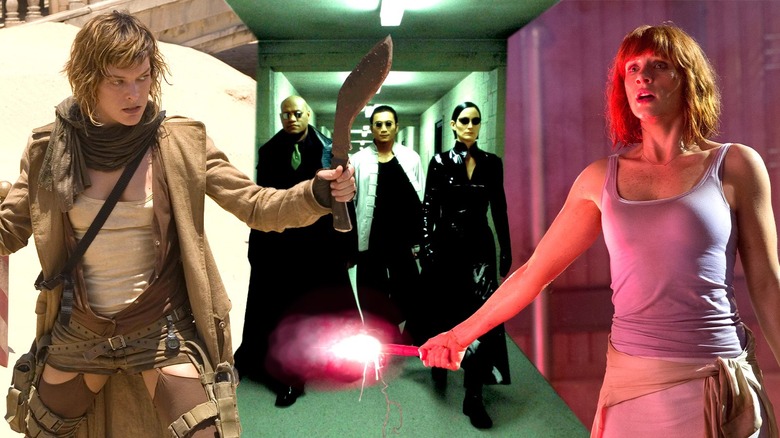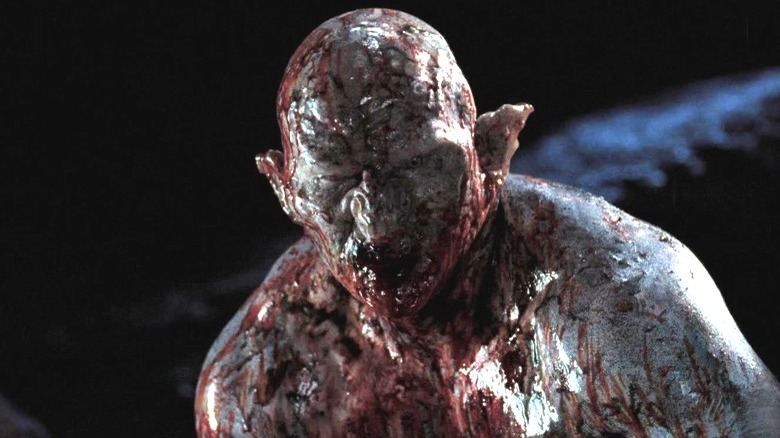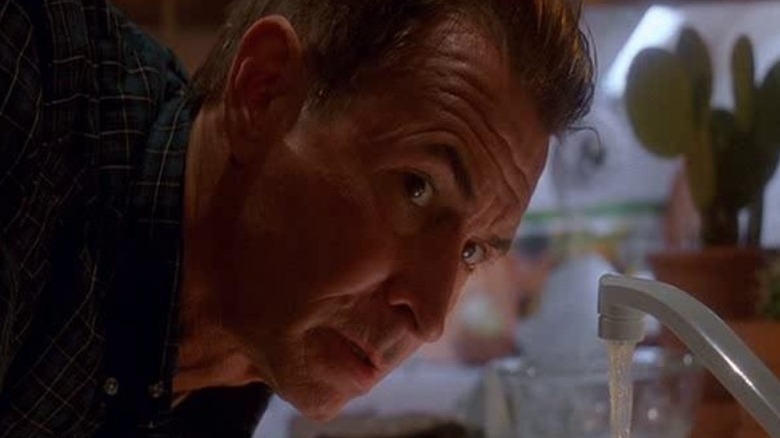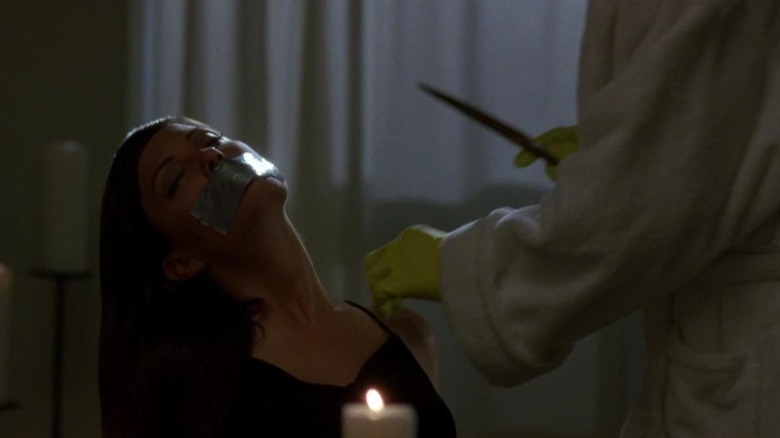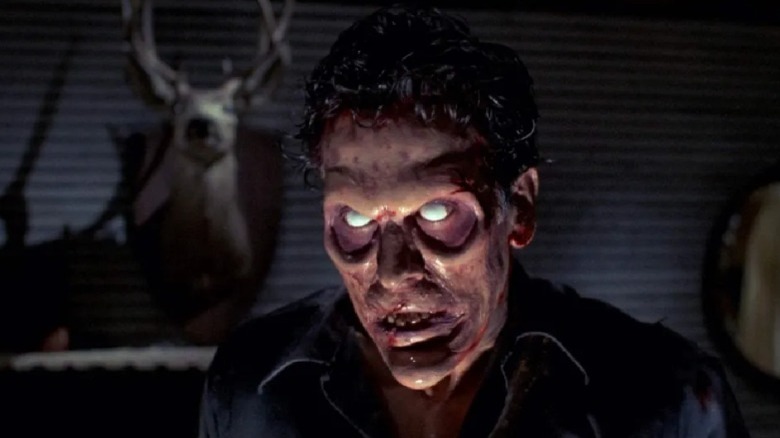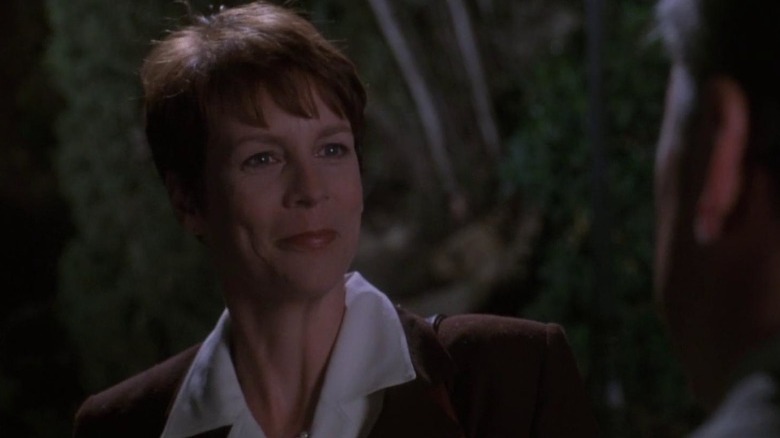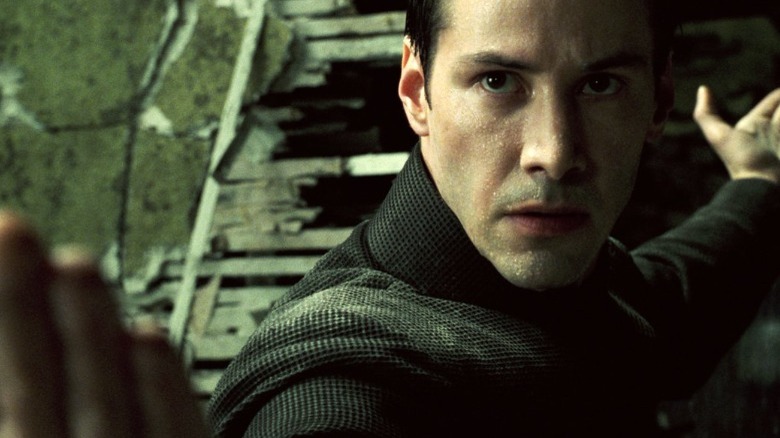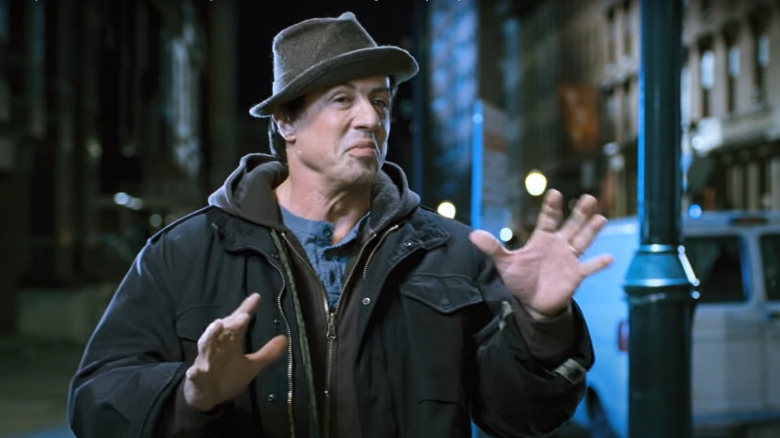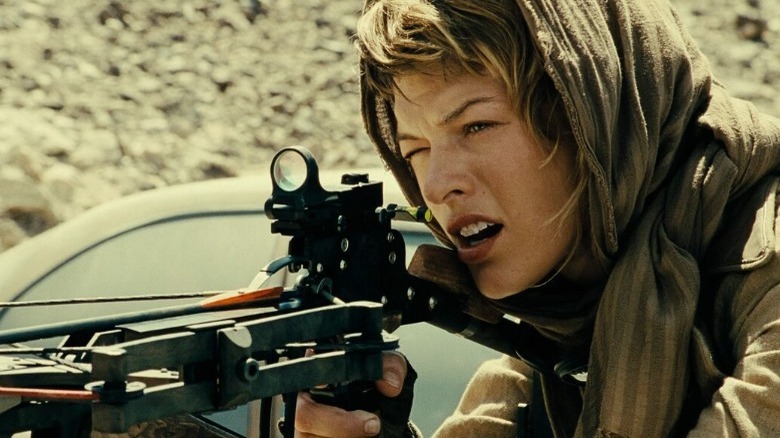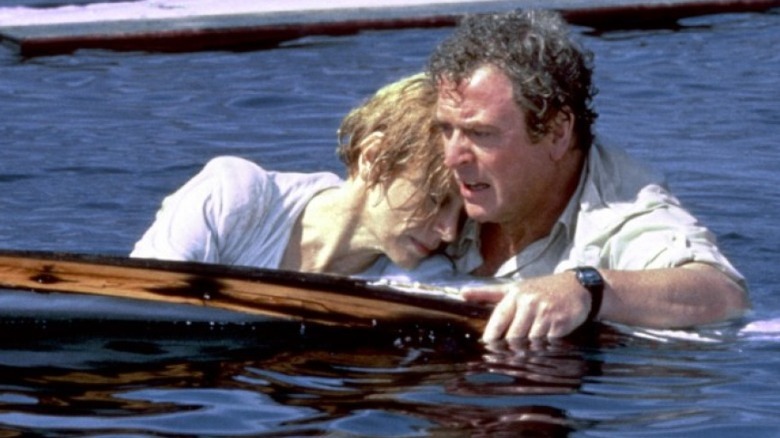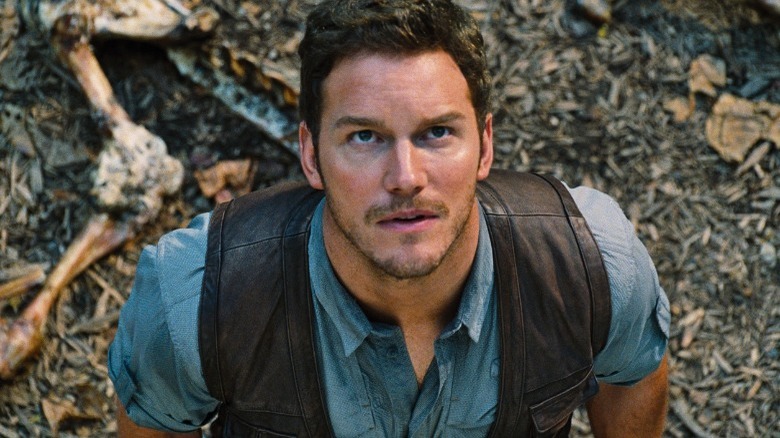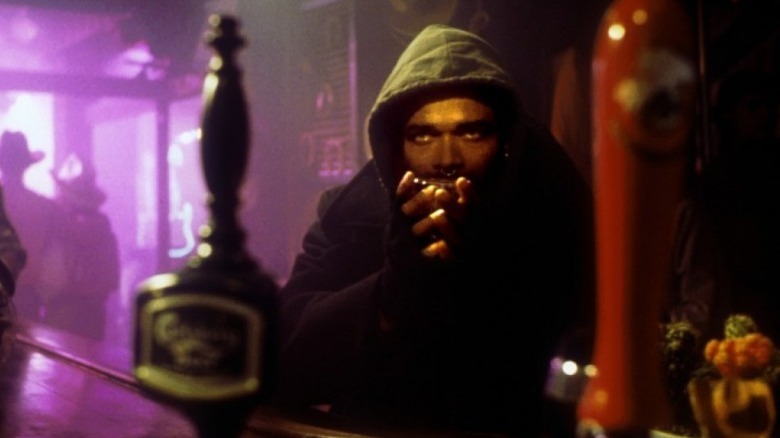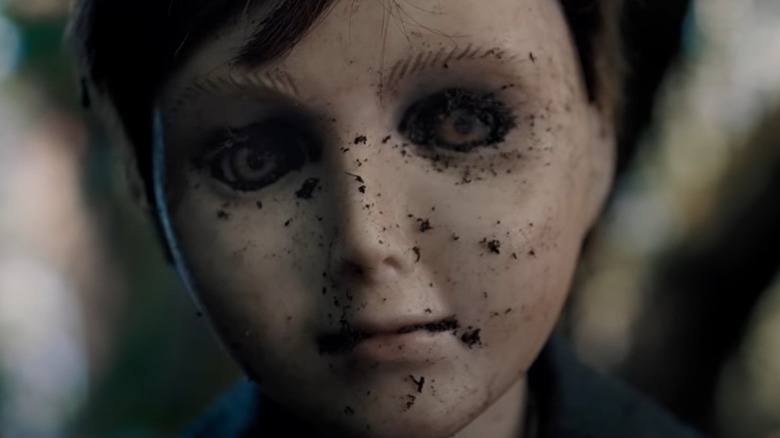Sequels That Totally Disregarded The Previous Film's Ending
In the modern age of blockbuster movie franchises like the MCU and "Star Wars," it has become commonplace for every film in a series to be interconnected. What happens in one release can have far-reaching consequences for events that take place years later. But even before these cinematic universes were commonplace, successful movies would still lead to sequels as studios tried to cash in on the popularity of a film by releasing further entries.
In the vast majority of cases, sequels continue the story with the same characters. They might visit new locations and get mixed up in fresh adventures, but there will be some sort of narrative link that joins the entries together. However, that isn't always the case, and sometimes a new movie in a franchise will completely disregard what came before.
This might be because the new movie has an entirely new cast and crew who want to make their own mark by doing things their own way. It could also be the case that the original film was never intended to have any sequels and doesn't conclude in a way that obviously opens the door for another chapter. Whatever the case, there are some great examples of movies that basically just ignore the ending of the film they were based on.
The Descent Part 2
"The Descent" is a 2005 horror film that was the first major project of English filmmaker Neil Marshall after "Dog Soldiers" in 2002. The story revolves around Sarah (Shauna Macdonald), a woman who was involved in a terrible car crash that left her husband and daughter dead. Around a year later, she joins five friends on a hike, and the group finds themselves trapped in a deep cave. As they become ever more desperate to escape, the hikers are attacked by strange pale human-like creatures.
The two versions of "The Descent" conclude differently. In one ending, Sarah manages to escape from the cave and make it to her car, although her mental state is left in question as she sees the bloody body of her friend Juno (Natalie Mendoza) in the vehicle with her. In the second, bleaker ending, Sarah wakes up and discovers she is still in the cave, having hallucinated an entire escape.
A 2009 sequel called "The Descent Part 2" takes place just two days after "The Descent." The sequel reveals that Sarah actually did escape the cave but has no memory of anything that happened or who she was with. Juno is also shown to still be alive even though she was seemingly killed in the first film. Marshall has since criticized the way that the sequel ignores both the endings of his story (via Vulture).
Psycho IV: The Beginning
One of Alfred Hitchcock's greatest movies, "Psycho" is a 1960 horror film based on Robert Bloch's novel of the same name. The story revolves around the Bates Motel as Lila Crane (Vera Miles) and private investigator Arbogast (Martin Balsam) look into the disappearance of her sister. They discover Norman Bates (Anthony Perkins) runs the motel the missing Marion Crane (Janet Leigh) checked into, but it turns out Bates isn't as harmless as he seems. In a shocking twist, Bates has developed an alternate personality based on his long-dead mother, and murders young women out of jealousy.
"Psycho" was followed by two sequels in the form of "Psycho II" and "Psycho III," in which Norman Bates is released from a secure hospital after he is deemed rehabilitated and no longer posing any danger to society. Unfortunately, Bates is soon absorbed by the personality of his mother and begins killing again.
A fourth film, "Psycho IV: The Beginning," basically ignores everything from the previous two sequels as it charts the events before and after the original movie. In this made-for-television psychological thriller, Bates is married to a psychiatrist after being released from a mental institution. As the plot unfolds, he is ultimately able to make the choice to turn his back on the influence of his mother and live a free life with his new family. While there are some brief mentions of its predecessors, this entry does not follow the same timeline.
American Psycho 2
Based on the 1991 novel of the same name by Bret Easton Ellis, "American Psycho" is a 2000 horror film that stars Christian Bale as serial killer Patrick Bateman. With the aid of his good looks, charm, and socially conscious yuppie persona, Bateman kills a variety of victims in gruesome ways while continuing to evade justice. The film concludes in a way that makes it unclear which — if any — of the events actually takes place, and whether Bateman is aware of what is happening to him.
"American Psycho 2" is a standalone sequel that sees Mila Kunis take on the role of a serial killer who murders her classmates at university as a way of getting ahead of them. As noted by The Guardian, there is little meaningful connection between the sequel and "American Psycho," which might well be because the film was not intended to be a sequel originally. Instead, it was adapted from a screenplay entitled "The Girl Who Wouldn't Die" that was not part of the same fictional universe.
Evil Dead II
Director and screenwriter Sam Raimi launched his career with the cult horror film "The Evil Dead" in 1981. Starring Bruce Campbell as protagonist Ash Williams, it tells the story of a group of friends at a remote cabin in the wilderness who accidentally unleash demonic forces. When these demons begin to possess his companions, Ash is forced to take extreme measures to stay alive and ultimately escape from the carnage.
When "Evil Dead II" was released six years later, it retconned the story of the original film, acting more as a remake of it than a direct sequel. The second film starts with a recap of the first movie, which drastically changes the plot and the events that occurred in "The Evil Dead." Obviously, many viewers were left confused about what was going on and why the sequel ignores what happened in the first entry of the series.
The changes were largely a result of the fact that Raimi didn't have the rights to re-use footage from the first film and so had to shoot scenes again, making some modifications as he went on. This explains why Ash is seen returning to the cabin with a new girlfriend in tow and without much mention of the friends who were present the first time around.
Halloween H20
A defining horror series, the "Halloween" franchise first began in 1978 with John Carpenter taking the reins of the original installment that features Jamie Lee Curtis and Donald Pleasence in leading roles. As you might expect from a series that consists of 13 films and numerous other media properties, it was always going to turn into something of a convoluted mess. But it is still strange that "Halloween H20" flat out dismisses everything that came after the 1981 film "Halloween II," ignoring an entire three-film story arc that centered on the character Jamie Lloyd.
Jamie is Laurie's daughter who grows up with a foster family following the death of her mother. She becomes the target of Michael Myers and is eventually killed during the events of "Halloween: The Curse of Michael Myers." In "Halloween H20," it is revealed that Laurie never died at all, having faked her death to try and escape from Myers. Not only does the movie retcon her death, but it makes no mention of Laurie having a daughter or the events that take place during Jamie Lloyd's "Halloween" movies.
The Matrix Revolutions
After the success of "The Matrix," a film that grossed almost half a billion dollars against a small budget of just $63 million, the Wachowskis soon began work on two back-to-back sequels to conclude the story. "The Matrix Reloaded" sees Neo in full possession of his powers as the One as he continues to work with Morpheus and Trinity to free humanity from the computer simulation.
"The Matrix Reloaded" actually ends with more than one cliffhanger. The first deals with the fact that Agent Smith has seemingly downloaded into the real world by taking over the mind of a human plugged into the Matrix called Bane, with the final shot panning over his unconscious body next to Neo. The cause of Neo's kayoed state is shown a few minutes earlier when he helps the crew of the Nebuchadnezzar escape from a group of pursuing sentinels by somehow destroying them with the power of his mind. The sheer effort causes him to fall into a coma.
Yet, by the time "The Matrix Revolutions" happens, this fact is pretty much discarded. There is never any real explanation given as to why Neo is able to destroy machines outside of the Matrix using powers that should only work within the computer simulation. The third film just moves forward without addressing the strange event, inviting fan theories that the "real world" of the cyberpunk franchise might just be another level of the Matrix.
Rocky Balboa
When Sylvester Stallone's "Rocky" was released in 1976, the scene was set for what would become one of the most successful sports movie franchises in history. The series focuses on the career of little-known boxer Rocky Balboa as he becomes a worldwide sensation following a dramatic fight with heavyweight champion Apollo Creed.
Rocky goes through some pretty tough times throughout the film series. By the time of "Rocky V," the Italian Stallion is forced into retirement due to the physical toll of his fight with Ivan Drago. In fact, he is suffering from serious brain injuries and takes up the job of a trainer, mentoring a new young boxer who is rising through the ranks. The 1990 film ends with Rocky getting into a street fight and leaving the sport for good.
When Rocky returns in "Rocky Balboa" in 2006, the now 60-year-old former boxer returns to the ring to fight an actual heavyweight champion who is in the prime of his career. The sixth installment essentially forgoes all of the lessons learned in the previous films, with a now old man continuing to fight despite his previous health scares and frailties.
Resident Evil: Extinction
Although the "Resident Evil" movie franchise is based on the Capcom video game series, the overall story and characters from the films have generally been separate from the games. Largely the work of director and writer Paul W. S. Anderson, the series began in 2002 with the release of "Resident Evil," starring Milla Jovovich as protagonist Alice, battling against the Umbrella Corporation and an outbreak of zombies. The first sequel arrived in 2004, with "Resident Evil: Apocalypse" following Alice as she escapes from the Umbrella Corporation and attempts to flee from the growing zombie infestation in Raccoon City.
Three years later, "Resident Evil: Extinction" continued the franchise with Alice now journeying through the Mojave Desert as the zombie infection has spread across the entire planet. One of the main gripes fans had with this third film is the way that it has little connection with its predecessors and starts afresh while ignoring major events from both "Resident Evil" and "Resident Evil: Apocalypse." Examples of this include Alice's unexplained telekinesis powers, a worldwide apocalypse that happens completely offscreen, and a whole host of characters that have seemingly disappeared between the second and third entries.
Jaws: The Revenge
Steven Spielberg burst onto the Hollywood scene in 1975 when he directed the highly acclaimed thriller "Jaws." A huge financial success, it spawned an entire franchise with multiple movies that involve various other great white sharks terrorizing the Brody family. The first, "Jaws 2," arrived in 1978 while the most recent was "Jaws: The Revenge," which came to movie theaters in 1987.
The immediate predecessor to this final film was the 1983 movie "Jaws 3-D." As the name suggests, it utilized 3-D technology requiring audiences to wear special glasses to get the full effect. The story largely follows the Brody family as Mike Brody attempts to stop a rogue great white shark at SeaWorld. Mike, portrayed by Dennis Quaid, works at the theme park and is in a relationship with Kay Morgan (Bess Armstrong).
The fourth film doesn't just ignore the ending of its predecessor — it doesn't acknowledge "Jaws 3-D" in any way. In this film, Mike is a marine biologist rather than a SeaWorld employee. He is played this time around by Lance Guest and has a wife called Carla (Karen Young) who helps him battle against a shark that has a personal vendetta against the Brody family. For some, though, the fact that "Jaws: The Revenge" essentially pretended that "Jaws 3-D" had never existed is for the best. After all, the film was panned by critics and fans.
Jurassic World
What began life as a Michael Crichton novel turned into a sci-fi media franchise that has grossed almost $2 billion in total. Starting with the 1993 film "Jurassic Park," the series expanded with two sequels in 1997 and 2001 in the form of "The Lost World: Jurassic Park" and "Jurassic Park III." This third installment follows Dr. Alan Grant as he travels to Isla Sorna to help rescue a young boy trapped among the many dinosaurs that inhabit the area.
The ending of "Jurassic Park III" sees the surviving group — made up of Dr. Alan Grant and the Kirby family — escape from Isla Sorna when they are rescued by a group of U.S. military servicemen. As they fly away on a helicopter to safety, they see several Pteranodons also soaring through the sky, having been let out of the aviary that housed them earlier in the movie.
In many ways, the new "Jurassic World" series is a soft reboot of the franchise rather than a proper continuation of the story, despite the numerous links to the original "Jurassic Park" trilogy. So, it is understandable that "Jurassic World" wouldn't address all of the issues thrown up in "Jurassic Park III" and its predecessors. But the fact that it makes no mention of the Pteranodons and their apparent escape from Isla Sorna is baffling. Were they captured? Did they spread out across the globe? These are answers that the audience will never know as "Jurassic World" simply disregarded the ending of "Jurassic Park III" entirely.
Highlander III
When "Highlander" hit cinema screens in 1986, it introduced viewers to a group of immortal warriors that can only be killed by beheading. Christopher Lambert's character Connor MacLeod is mentored by another immortal played by Sean Connery who is known as Juan Sánchez-Villalobos Ramírez, who reveals how the immortals are locked in a centuries-long battle to defeat every other immortal and absorb their power. "Highlander" was followed by two films, as well as novels, comics, and a television series.
"Highlander II: The Quickening" is undoubtedly the worst movie in the "Highlander" franchise. It basically tosses out every good idea from the first movie and goes in a weird new direction, revealing that the immortals are actually exiled aliens from an ancient planet. A rare example of a film with a 0% rating on Rotten Tomatoes, the sequel also proved to be a box office failure and has largely been left forgotten in the series.
Taking all that into account, it is easy to see why director Andrew Morahan and the writers behind "Highlander III" chose to ignore everything from it and instead suggest that the third film is the real sequel to the original "Highlander." Even many fans don't consider "Highlander II" canon and it is generally considered to be one of the worst sequels of all time, so passing it over may have been the best solution.
Brahms: The Boy II
One of the more modern films in this list, "The Boy" is a 2016 release that follows Greta Evans (Lauren Cohan) as she moves to the U.K. to work as a nanny for a couple. When she arrives, Greta realizes to her shock that she is actually tasked with looking after a porcelain doll named Brahms. This figure is based on a young boy who was killed in a fire 20 years ago; apparently the now-elderly parents have struggled to move on and are obsessed with the doll.
As the story progresses, it seems as if Brahms is alive and can move around despite being inanimate. Near the end of the film, it is revealed that Brahms actually survived the fire and has been secretly living in the house and influencing events via the doll. When the disturbed adult attempts to kill Greta and her friend Malcolm (Rupert Evans), she manages to trick him and fatally stabs him with a screwdriver so they can escape.
"Brahms: The Boy II" acts as a direct sequel to the first film and was released in 2020. Taking place some years after "The Boy," it sees a young family move into the home where the terrible events of the first film took place. The porcelain doll has been repaired and is now definitely possessed, despite the fact that the doll is controlled by the adult Brahms in the twist ending of the original movie.
